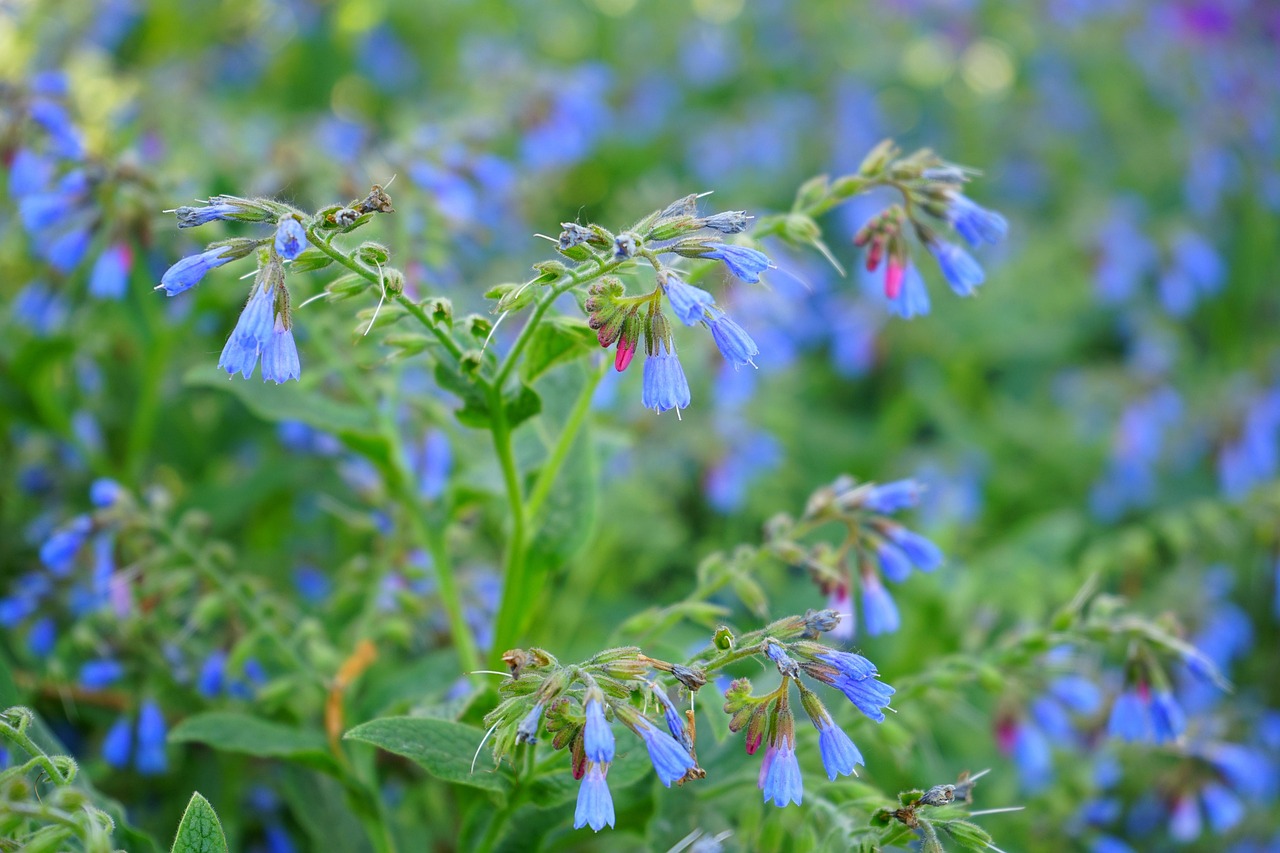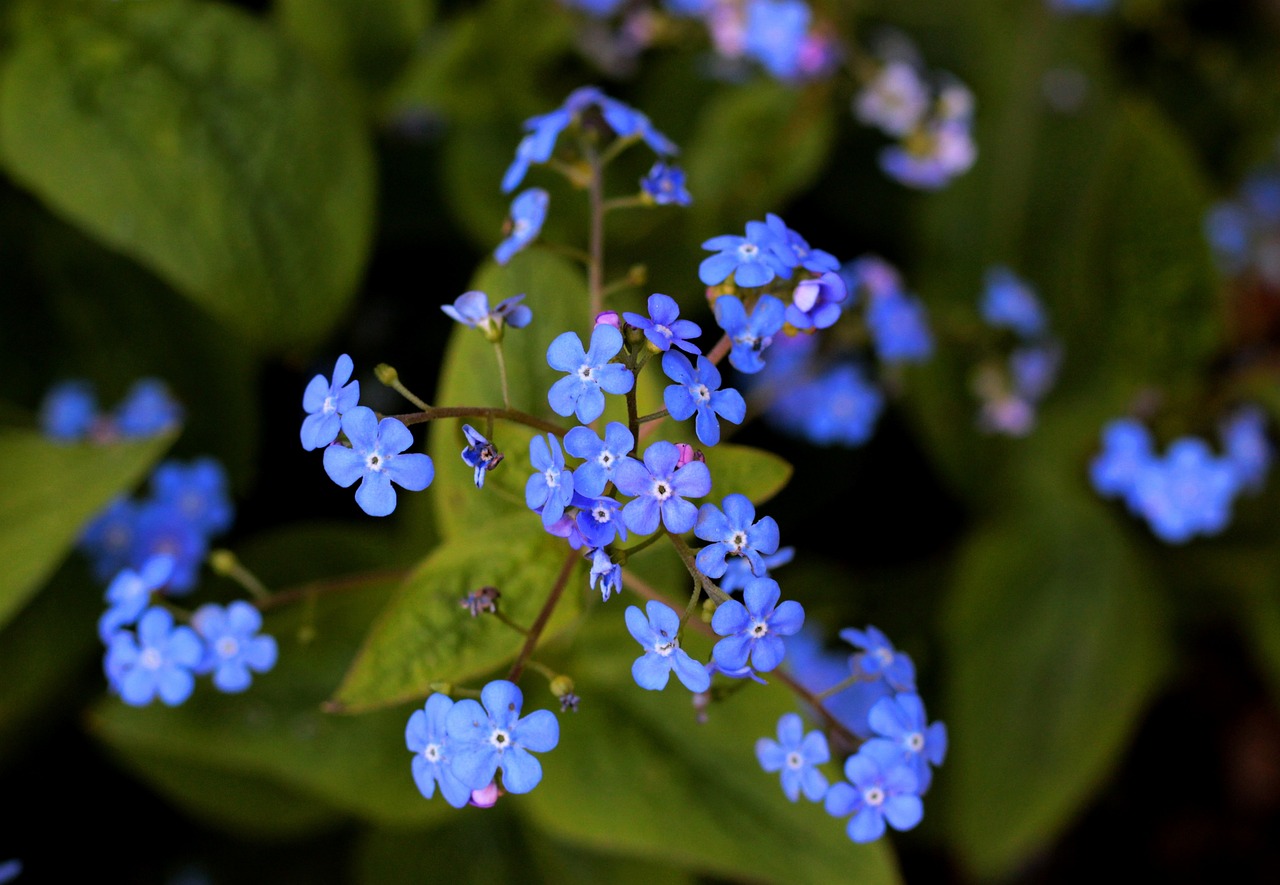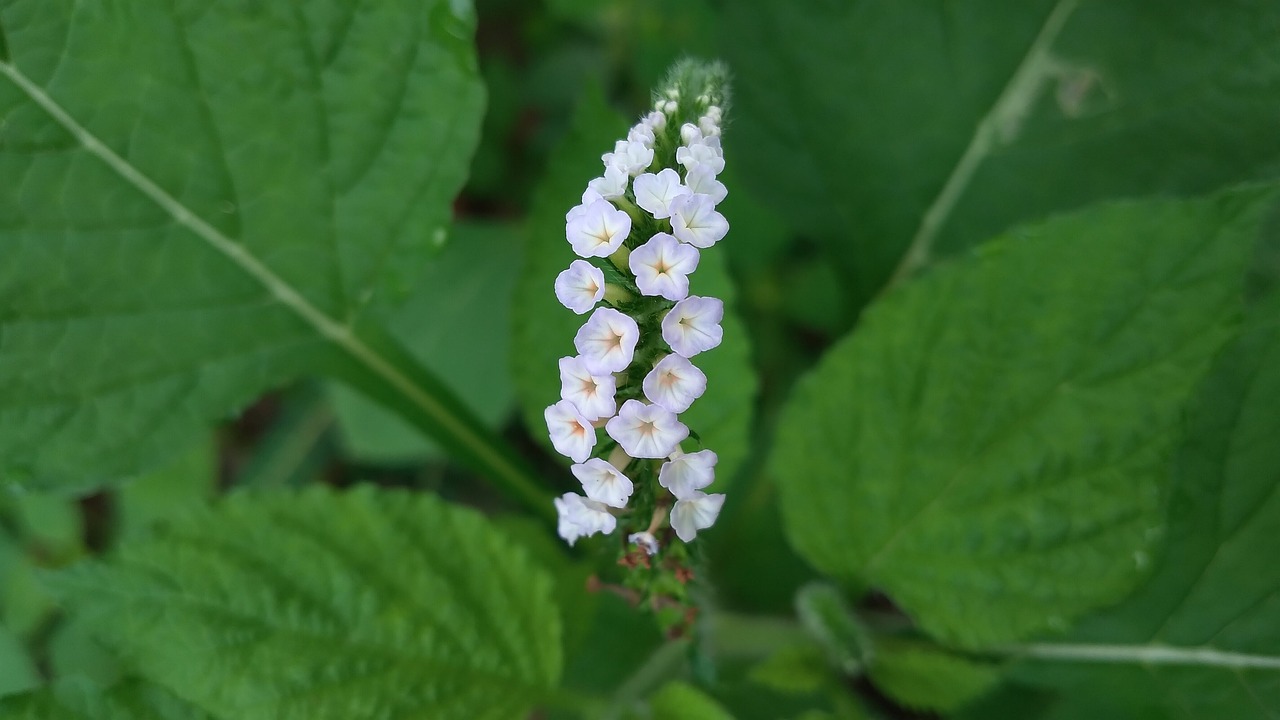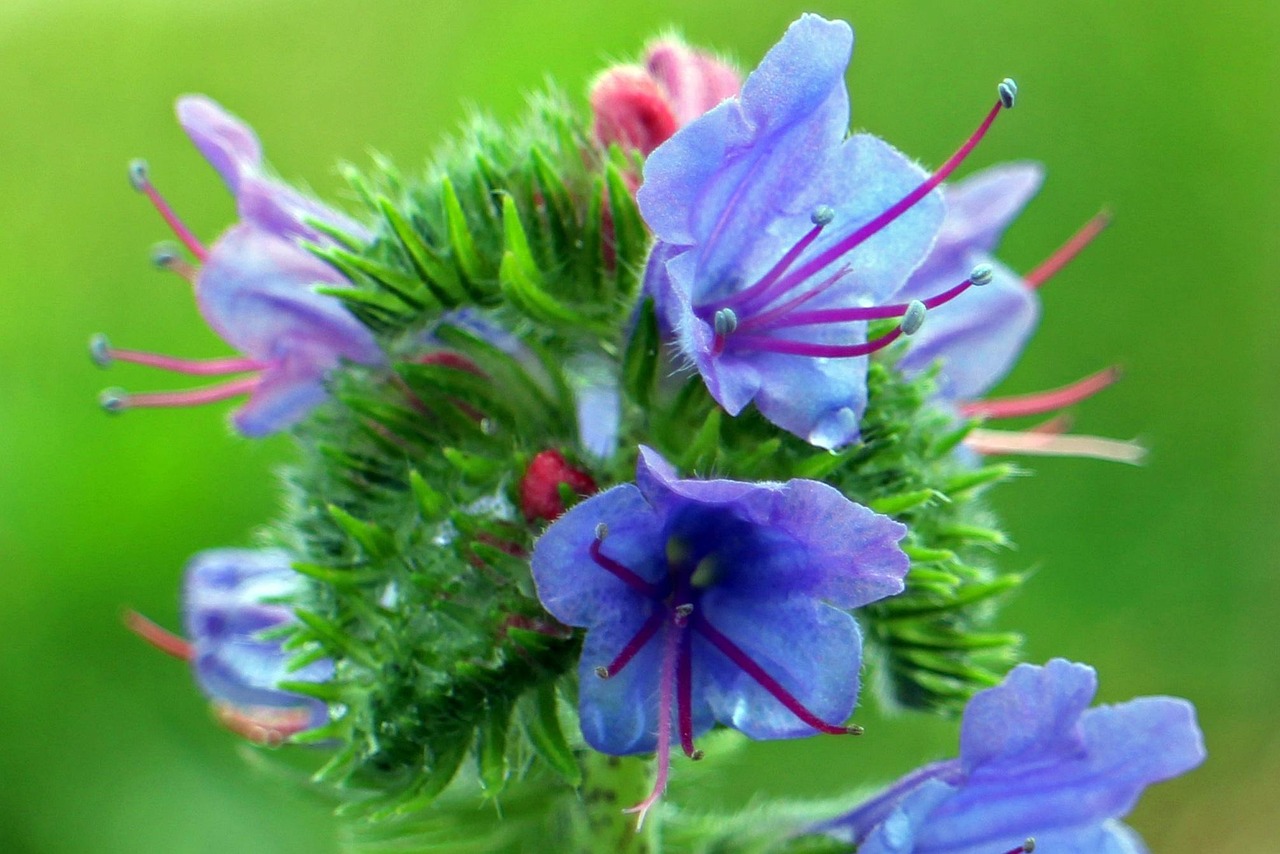Nemophila | A Beautiful Blue Carpet Reflecting the Spring Sky
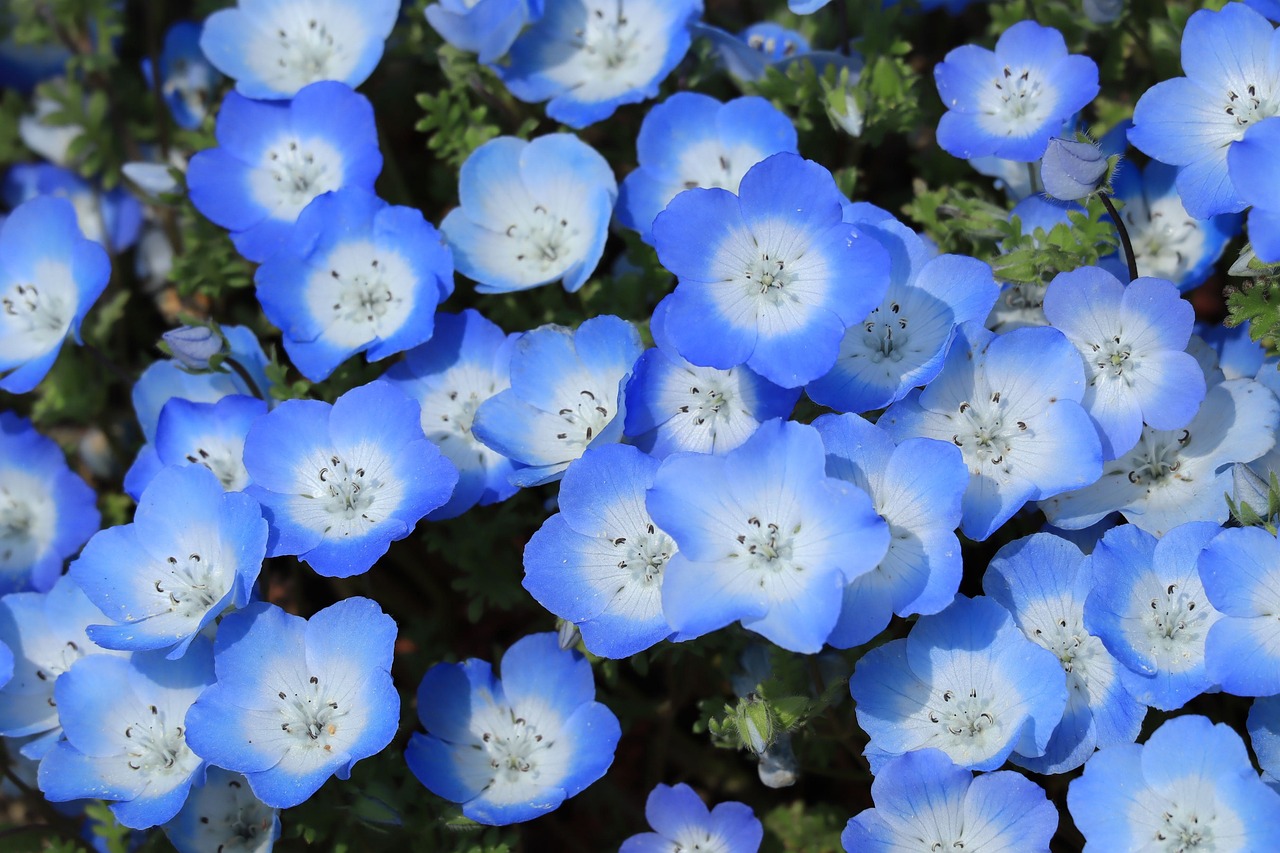
Nemophila is known for its charming blue blossoms that spread across wide fields, and it is one of the flowers that brighten up spring in Japanese parks and gardens.
The “Nemophila Hill” at Hitachi Seaside Park is particularly famous and attracts many visitors as a popular tourist destination.
In this article, I will explain Nemophila in detail, from its basic information and cultural background to practical gardening tips.
Basic Information
- Scientific name: Nemophila menziesii
- Family: Boraginaceae
- Origin: North America
- Appearance:
Nemophila produces small blue petals with a white center, creating a gradient-like effect. The plant grows low and spreads across the ground, making it suitable as a ground cover. Its vivid sky-blue color is its most distinctive feature. - Blooming season:
Spring (March to May), when it creates a breathtaking carpet of blue in gardens and parks.
Cultural Significance Around the World
Nemophila is cherished worldwide primarily as an ornamental flower.
In the United States, it is affectionately known as “Baby Blue Eyes” and is often planted in gardens and public flower beds.
Clusters of Nemophila are regarded as a symbol of spring landscapes. The flower is also associated with the meanings of “peace” and “happiness,” and is widely loved for its calming presence.
Historical Background
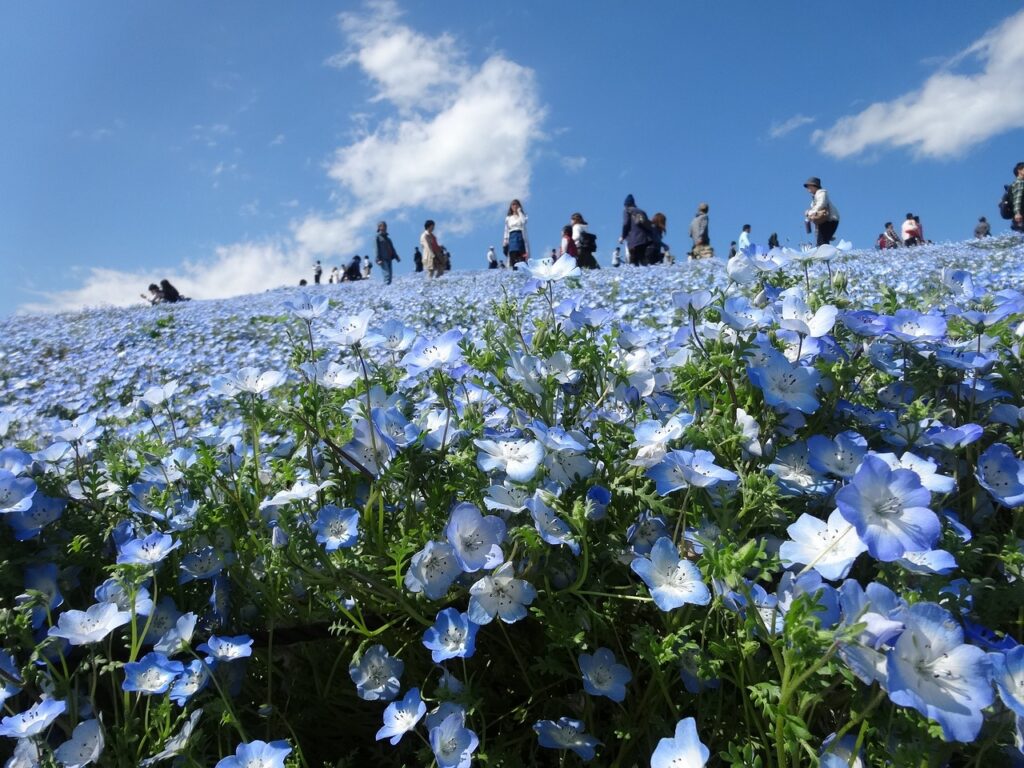
Nemophila was introduced from America to Europe in the 19th century and quickly spread as an ornamental plant.
In Britain and France, it was valued for its blue blossoms and widely planted in aristocratic gardens across Europe.
In Japan, Nemophila was introduced during the Meiji era and began to be used in gardens and flower beds.
It became widely known when “Nemophila Hill” at Hitachi Seaside Park gained attention as a tourist attraction. Every spring, millions of Nemophila bloom there, creating a spectacular view that leaves a lasting impression on visitors from both Japan and abroad.
Gardening Advice
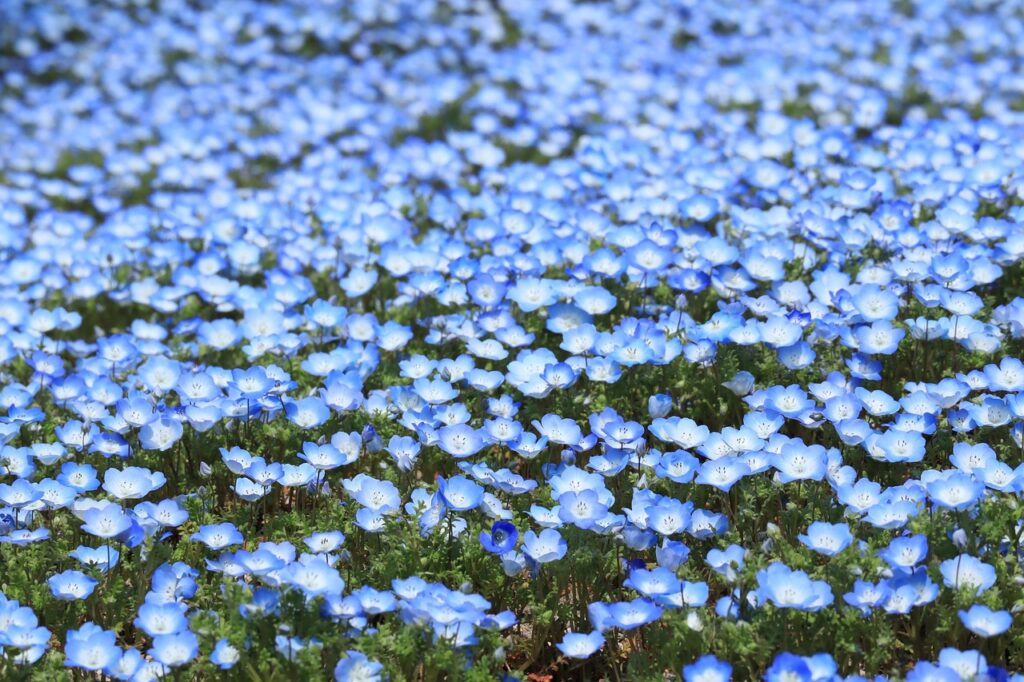
Cultivation Guide
Nemophila is relatively easy to grow. It prefers sunny locations with good air circulation. Spring is the best time for planting, and it can be easily grown from seeds with rapid growth.
The key is to avoid excessive moisture and to water moderately. Since drought can cause the flowers to wither, it is best to water when the soil surface becomes dry.
Environment and Growing Conditions
Nemophila thrives in well-drained soil. When planting in gardens or pots, adding compost or peat moss improves drainage.
It is also resistant to cold, making it suitable for cultivation even in relatively cool regions. Fertilizer applied in early spring before blooming will promote abundant flowering.
Conclusion
Nemophila is a beautiful flower that colors spring landscapes with its refreshing blue blossoms, bringing a sense of peace to those who see it.
Because it is easy to cultivate, even beginners can enjoy growing Nemophila in flower beds or pots.
I encourage you to plant Nemophila next spring and experience the beauty of its vibrant blue flowers.


